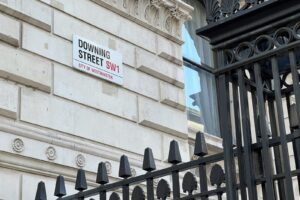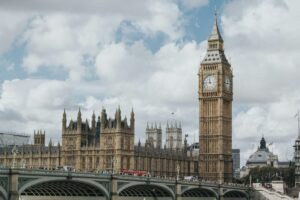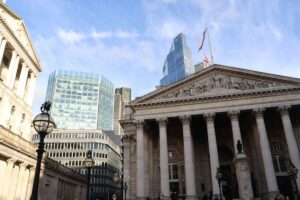Today’s (early) announcement from the Bank of England’s Monetary Policy Committee (MPC) confirms what most of us were already thinking, that negative rates are not being put in place yet but clearly this is on the MPC’s agenda for serious consideration as the economy continues to suffer from the Covid blues and the financial impact continues to hit hard. The MPC has confirmed that it was a unanimous decision to maintain Bank Rate at 0.1% for the time being, as England begins four weeks of lockdown starting today in line with restrictions already in place across the devolved nations.
What are the experts saying?
Laith Khalaf, financial analyst, AJ Bell, warns that the BoE is beginning to run out of dry powder. “The Bank of England has unleashed another £150 billion of QE to help prop up the economy as it enters a second national lockdown. This may not be the end of the Bank’s pandemic interventions, particularly if another lockdown becomes necessary further down the line.
“The Bank is beginning to run out of dry powder as it now holds almost half the gilt market. and interest rates are already close to zero. That means if the central bank wants to boost the economy further, it may resort to even more extraordinary measures than we have today.
“Negative interest rates are certainly on the table. The Bank is seriously weighing this up and has written to bank chiefs to see if they can handle it. QE could also shift towards different assets, such as more corporate bonds, high yield bonds and even equities, as has happened in Japan.
“Much will depend on how the pandemic, social restrictions and the government’s fiscal response proceed from here. For the moment markets are pricing in a 40% chance of an interest rate cut next year, and it’s fair to say that markets have consistently underestimated the capacity for monetary policy to loosen ever since the financial crisis.
“This is all terrible news for cash savers, who have endured more than ten years of ultra low interest rates. £210 billion now sits in cash accounts that don’t pay any interest, up from £26 billion in 2008. A further £837 billion is held in accounts paying on average 0.13%.
“This money is slowly but surely losing its buying power, even though inflation is currently so low. That won’t be the case for too long, as inflation is expected to move back towards 2% in the first half of next year as lower energy prices fall out of the equation.
“Huge amounts of cash have been tucked away since the first national lockdown, to the tune of £88 billion. Savers should make sure that money is working as hard as possible, by shopping around for the best rate and considering fixed term cash products which tend to offer more interest.
“For money that can be put away for ten years or more, investors should think about drip feeding some money into the stock market, though it’s important to always keep a cash buffer for emergencies.
“The Bank of England is now forecasting an 11% drop in GDP in the last three months of this year. It then projects growth through next year, reaching pre-COVID levels by the end of the year, on the premise that social restrictions loosen and the pandemic’s impact on the economy begins to wane. Let’s hope they’re right, even though that looks like a heroic assumption right now.”
Luke Bartholomew, Senior Economist at Aberdeen Standard Investments, commented: “Given the resurgence of the virus and a return to a much more comprehensive lockdown, an increase in asset purchases from the Bank of England today was always extremely likely. As it was, the amount of easing delivered today was at the top end of expectations as the Bank seek to do all it can to support the economy. However, with the structure of rates already incredibly low, it is hard to believe QE can deliver a huge amount of further stimulus from here, even if does make it easier for the government to finance and deliver it’s huge fiscal easing. The Bank has shown it is not yet ready to take rates negative given operational considerations, and that they don’t really believe this is the appropriate economic backdrop to get the maximum possible stimulus from negative rates.”












